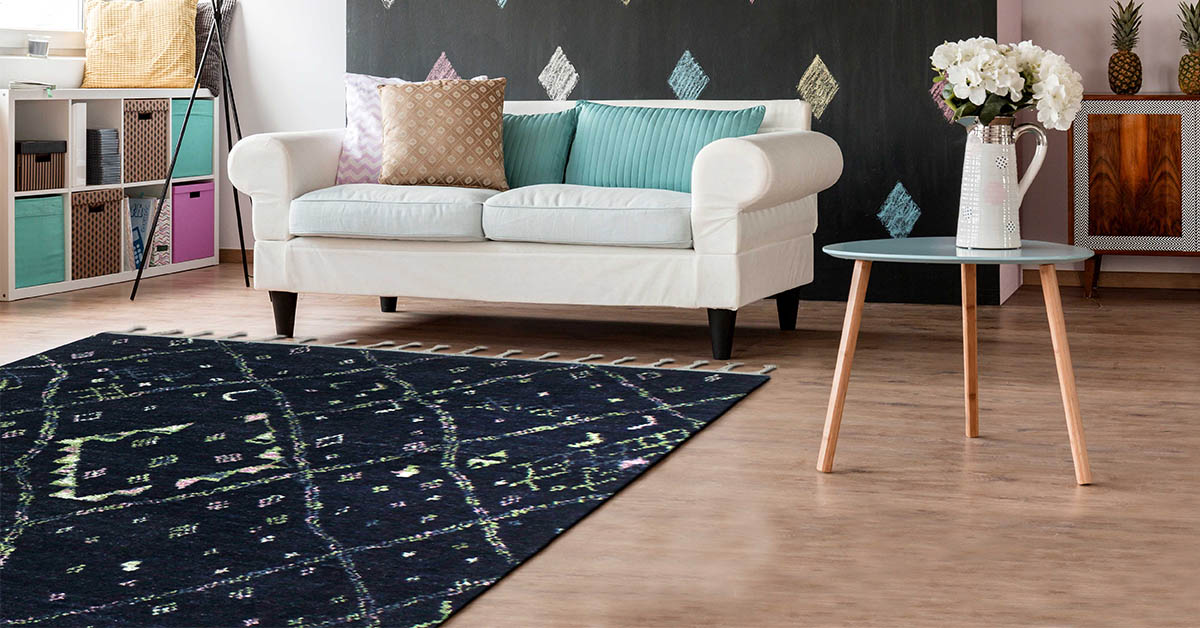
Moroccan rugs are renowned for their rich history, intricate designs, and luxurious textures. Handwoven by skilled artisans using traditional techniques, these rugs bring warmth, character, and authenticity to any space. Whether you’re drawn to the geometric patterns of Beni Ourain rugs or the vibrant colors of Azilal rugs, Moroccan rugs offer a unique blend of artistry and practicality. In this guide, we’ll explore the history, benefits, types, and styling tips for incorporating Moroccan rugs into your home decor.
History of Moroccan Rugs
Moroccan rug-making dates back centuries, with Berber tribes crafting rugs for warmth and cultural expression. Each tribe has its own distinct weaving techniques, patterns, and color palettes, reflecting regional influences and storytelling traditions. These rugs were originally made for practical purposes, such as insulating homes in the cold Atlas Mountains or providing comfort in desert climates.
Benefits of Moroccan Rugs
1. Authentic Handmade Craftsmanship
Every Moroccan rug is handwoven, making each piece unique and rich in cultural heritage.
2. Versatile Design Aesthetic
From minimalist interiors to bohemian and eclectic styles, Moroccan rugs complement various decor themes.
3. Durable and Long-Lasting
Made from high-quality wool, these rugs are incredibly durable and can withstand daily wear and tear.
4. Adds Warmth and Texture
Thick, plush Moroccan rugs create a cozy and inviting atmosphere.
5. Eco-Friendly and Sustainable
Traditional Moroccan rugs are crafted using natural wool and dyes, making them an environmentally friendly choice.
Types of Moroccan Rugs
1. Beni Ourain Rugs
Characterized by their soft, ivory wool and simple black geometric patterns, Beni Ourain rugs add elegance and warmth to modern and minimalist spaces.
2. Azilal Rugs
Handwoven with vibrant colors and abstract designs, Azilal rugs bring a bold and artistic touch to interiors.
3. Boucherouite Rugs
Made from recycled fabric scraps, these colorful and eclectic rugs are a sustainable and creative choice.
4. Kilim Rugs
Flatwoven and lightweight, Moroccan Kilim rugs feature intricate tribal patterns and vivid hues, perfect for layering and accent decor.
5. Tuareg Mats
Crafted from palm reeds and leather, these durable rugs are ideal for high-traffic areas and outdoor spaces.
Choosing the Right Moroccan Rug for Your Space
1. Size and Placement
- Large rugs (8×10 or 9×12 feet) work well in living rooms and bedrooms for a cohesive look.
- Medium rugs (5×8 or 6×9 feet) are ideal for accenting furniture arrangements.
- Small rugs (3×5 feet or smaller) can be used as statement pieces in entryways, kitchens, or layered over larger rugs.
2. Material Selection
- Wool: The most common material, offering softness, durability, and natural stain resistance.
- Cotton: Lightweight and budget-friendly, suitable for casual spaces.
- Recycled Fabrics: Found in Boucherouite rugs, these materials make for vibrant and sustainable decor.
3. Color and Pattern Considerations
- Neutral tones (ivory, beige, gray) for a timeless and sophisticated look.
- Bold colors (reds, blues, yellows) to add energy and vibrancy.
- Traditional geometric patterns for a classic Moroccan feel.
- Abstract and artistic designs for a modern and eclectic touch.
Styling Moroccan Rugs in Your Home
1. Living Room
- Place a Beni Ourain rug under your coffee table for a cozy and elegant touch.
- Layer an Azilal rug over a neutral base to add artistic flair.
2. Bedroom
- A soft, high-pile Moroccan rug adds warmth and comfort underfoot.
- Opt for a neutral-toned Beni Ourain rug to create a serene retreat.
3. Dining Room
- Use a Kilim or Tuareg mat for a durable and visually striking dining space.
- Ensure the rug is large enough for chairs to slide in and out comfortably.
4. Entryway and Hallways
- A small Azilal or Boucherouite rug can make a bold first impression.
- Durable flatwoven Kilim rugs are ideal for high-traffic areas.
Caring for Your Moroccan Rug
1. Regular Vacuuming
- Prevents dirt buildup and preserves the rug’s vibrancy.
- Use a vacuum without a beater bar for delicate fibers.
2. Spot Cleaning for Stains
- Blot spills immediately with a clean cloth.
- Use mild soap and water for gentle stain removal.
3. Rotate Periodically
- Rotating the rug every few months ensures even wear.
4. Shake or Beat the Rug
- Traditional Moroccan cleaning involves hanging the rug and beating out dust.
5. Professional Cleaning
- Deep clean once a year to maintain the rug’s beauty and longevity.
Conclusion
Moroccan rugs are more than just decorative pieces—they are works of art steeped in history and blue area rugs tradition. Whether you prefer the minimalist beauty of a Beni Ourain rug or the vibrant energy of an Azilal rug, these handcrafted treasures add warmth, character, and sophistication to any space. By selecting the right rug and caring for it properly, you can enjoy the timeless elegance of Moroccan craftsmanship for years to come.